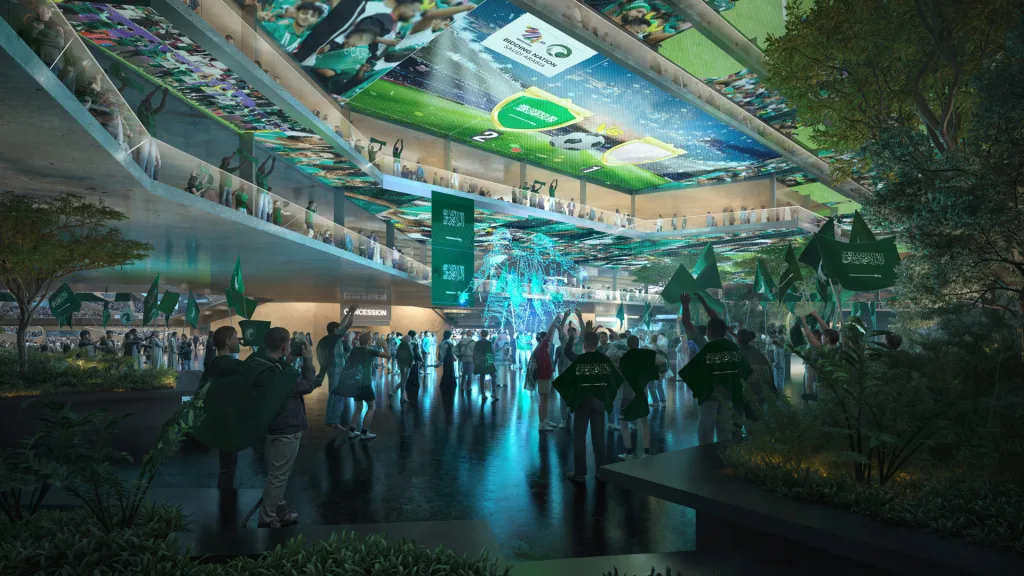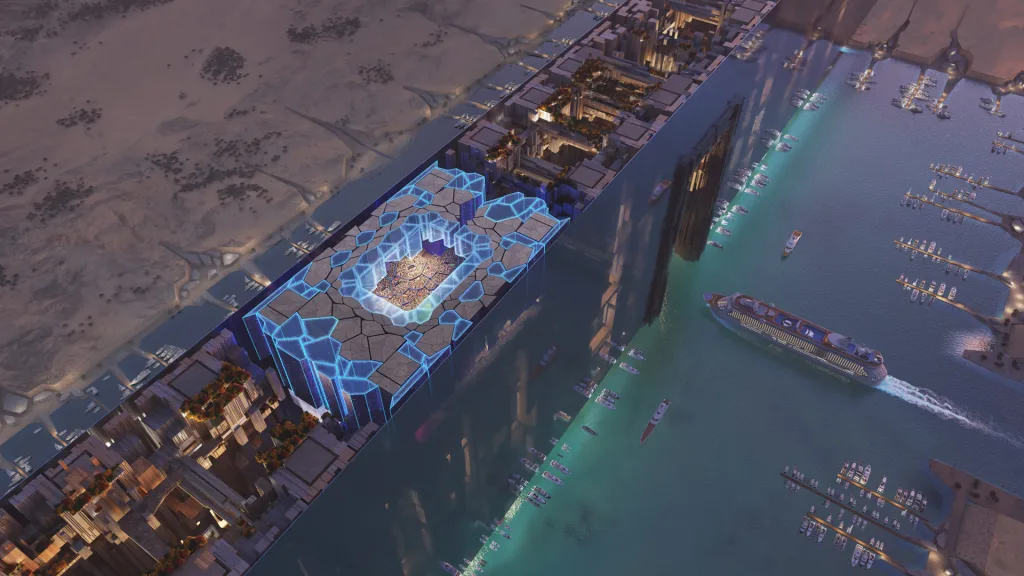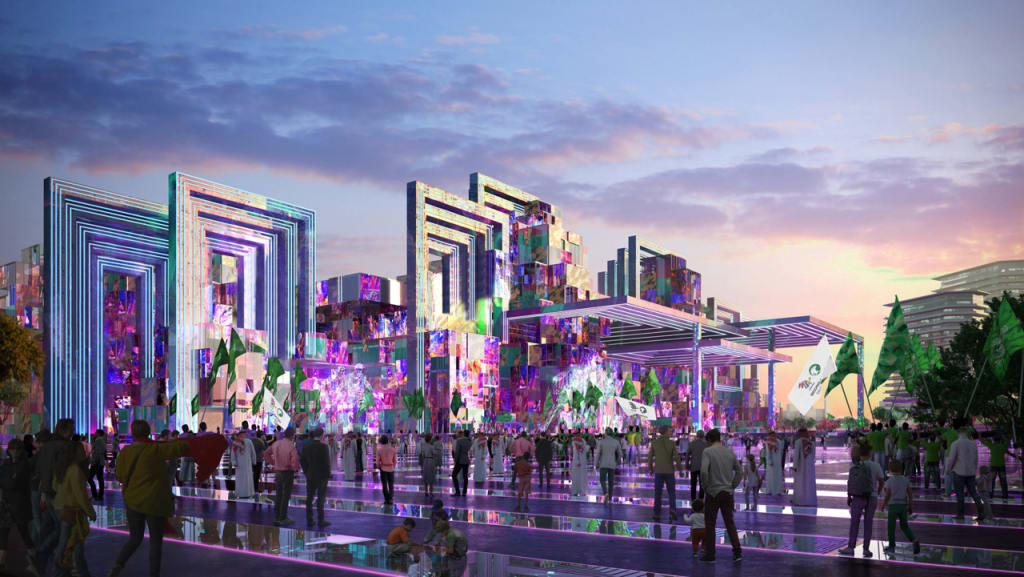Saudi Arabia is embarking on a new project that defies belief. In addition to the 10,200-square-mile urban development, Neom, the country now has to finish 11 new soccer stadiums, expand four more, and build 132 training venues for 48 national teams before the World Cup kicks off in 2034.
To call it a big job is an understatement, and the icing on this construction cake will the building of Neom Stadium atop Neom’s The Line—a project that is perceived to be drowning in financial cutbacks, delays, and controversy. Renderings show a stadium comprised of multilevel triangular and hexagonal bleachers, irregular external geometry accentuated by blue neon lights, and what looks like a massive chandelier made of LED screens hanging from its ceiling. It looks like the product of an architect’s LSD-induced dream after watching Tron.

The stadium will be situated 350 meters above ground, on top of the tunnel of love that will allow full cruise ships to dock right into The Line’s belly. According to the plans, the soccer venue will cover part of the city and feature a seating capacity of 46,000. It will be surrounded by a constellation of facilities such as a fan festival site, training pitches, and five hotels distributed across the ”cityscraper.”

The construction of the Neom Stadium is scheduled to begin in 2027, with completion expected by 2032. But many are questioning whether this will be possible at all looking at the many problems that are putting feasibility of The Line at risk. Initially planned to stretch 105 miles and accommodate 1.5 million residents, the plan was drastically scaled back due to lack of funding. Current plans reduce The Line to just 1.5 miles in length, aiming to house fewer than 300,000 residents by 2030. The cutbacks raise questions about the feasibility and practicality of the project, which is being fiercely defended by its promoters.

The Saudi Arabia’s World Cup bid describes a building craze that will reportedly cost “hundreds of billions of dollars over the next decade.” In addition to the Neom Stadium, we will see the King Salman Stadium, another new venue perched on a 656-feet-high hill in Saudi Arabia’s capital of Riyadh. With a capacity of 92,000, it will host the opening and final matches. Also in Riyadh, the Roshn Stadium will accommodate 46,000 spectators, while New Murabba Stadium will host 45,000. That is three major soccer stadiums in the same city.
The 45,000-spectator Prince Mohammed Bin Salman Stadium—MBS is reportedly behind the World Cup 2034 bid, same as Neom—will be in the city Qiddiya, featuring a retractable pitch and roof hold. Jeddah will see the construction of four new stadiums, with additional venues planned in Al Khobar, Abha, and other cities. Renovations are also planned for existing stadiums such as Prince Faisal Bin Fahd Stadium and King Fahd International Stadium in Riyadh. This massive effort will be the “most expensive sports construction project ever undertaken,” according to The Times of London.

Insane ambition, questionable ethics
Needless to say, the task of meeting the proposed deadlines, especially given the unique and complex designs of the new stadiums, will be a challenge. All of the stadiums are allegedly the work of top architectural firms, who have yet to be disclosed.
Exactly how Saudi Arabia will tackle this massive project is another concern. The World Cup is no stranger to human rights abuses. The 2022 World Cup, hosted in Qatar, came under fire for the mistreatment of workers who built the stadium. An investigation by The Guardian revealed 6,500 out of about 30,000 migrant workers from India, Pakistan, Nepal, Bangladesh, and Sri Lanka, died during the construction of the stadium. Amnesty International has already denounced Saudi Arabia’s human rights plan for the 2034 World Cup, claiming that the country has failed to address the exploitation of migrant workers under the kafala system, a way of binding migrant workers to employers throughout their residence in Middle Eastern countries that results in forced labor situations under conditions close to full slavery. And Saudi Arabia has already been criticized for its forceful approach to clearing land to make room for Neom.
This, on top of the litany of ethical issues FIFA has been part of in recent years, is perhaps why no architectural firm has publicly acknowledged its involvement in one of the most surreal build-out projects known to sports (contrary to some reports, a source can confirm that Danish studio BIG is not involved in the project).